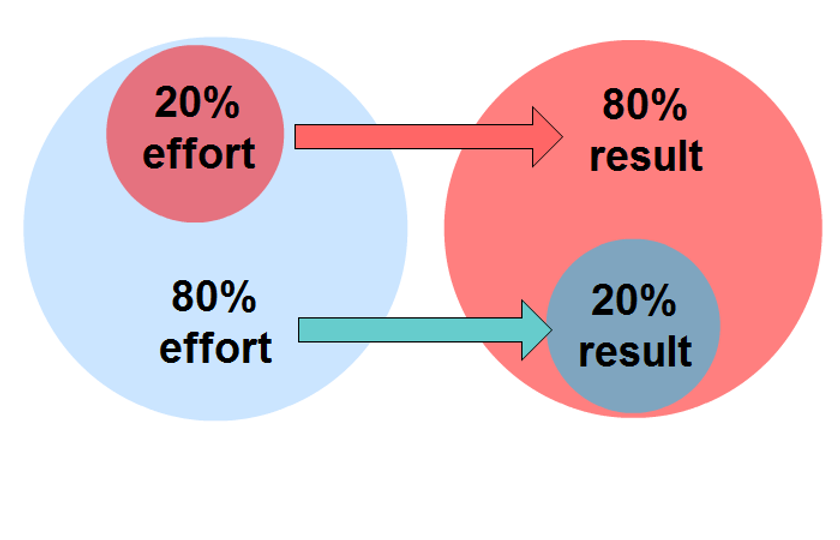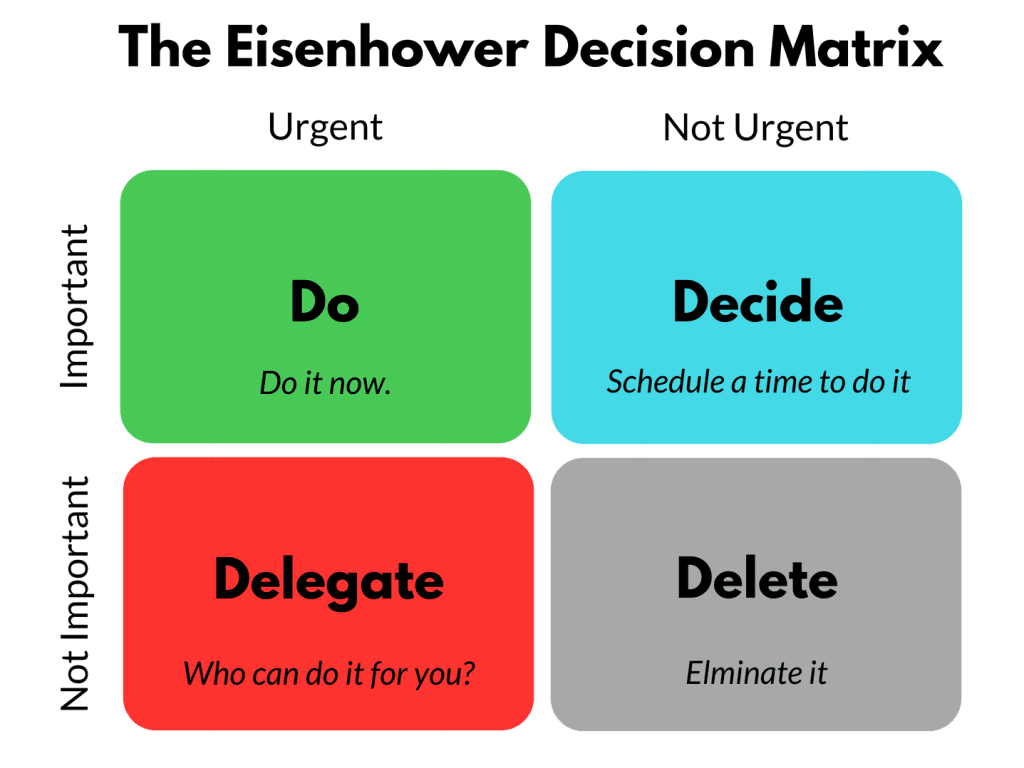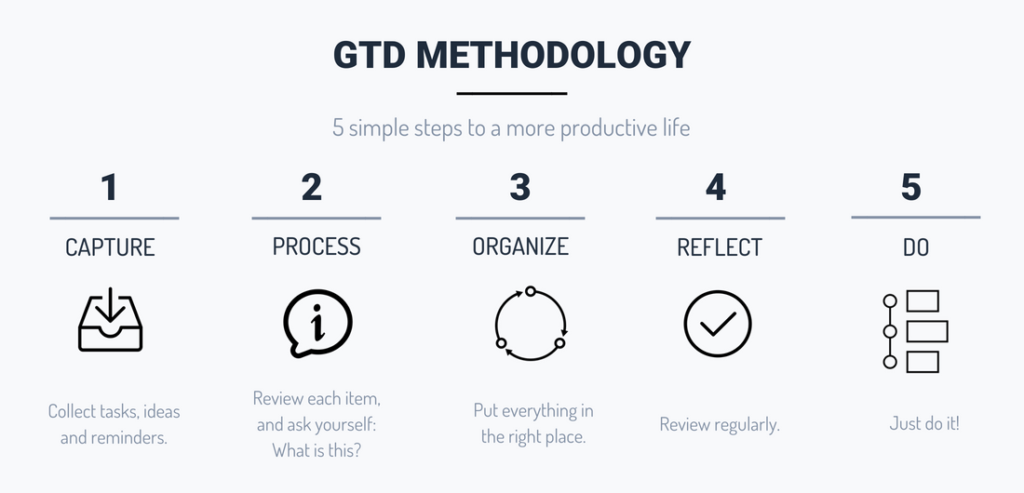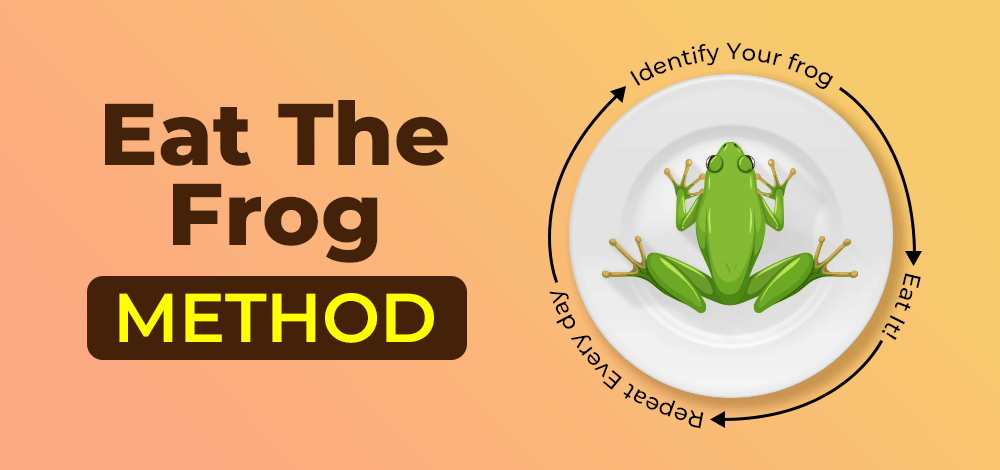Learning to manage time well is key to a productive life. This is especially true at home, where it’s easy to get distracted. To strike a good balance between work and life and up your personal productivity, you need to learn how to use time management strategies. There are lots of methods out there, like the Pareto Analysis, the Pomodoro Technique, and the “Eat That Frog” way. These methods can help you use your time better, lower your stress, and get more out of your every day.
The Pareto Analysis, known as the 80/20 rule, focuses on doing the 20% of tasks that give you 80% of the results. The Pomodoro Technique divides your work into 25-minute segments, making you more focused and productive. The Eisenhower Matrix, made by Dwight Eisenhower, helps you set tasks by what’s urgent and what’s important.
Use the Time Blocking Method to assign tasks to specific time blocks, a favorite of Elon Musk’s. This way, work gets finished within a given deadline, thanks to Parkinson’s Law. The GTD Method by David Allen highlights capturing, clarifying, and organizing tasks. Tony Robbins’ RPM centers on setting clear goals, life purposes, and action plans.
The Pickle Jar Theory helps by sorting tasks into rocks, pebbles, and sand, so you know what to tackle first. The advice to “Eat That Frog” tells us to do the hardest job first thing every morning. This way, the day becomes much more doable.
By learning and using these approaches, you can really boost your personal productivity. This helps you handle tasks better and have a more balanced life.
Pareto Analysis: Focusing on What Matters Most
Managing time at home can feel like juggling. But, using Pareto analysis makes things easier. It’s based on the 80/20 rule. This says 20% of what you do brings 80% of your results.
Understanding the 80/20 Rule

The 80/20 rule is also the Pareto principle. It shows most outputs come from just a few inputs. For example, a few products might make most of a company’s money. In projects, a small amount of problems can cause a big share of issues. The Hard Rock Hotel found that 20% of guest complaints, mostly about room service and check-in, made up 80% of all complaints.
Steps to Implement Pareto Analysis
To use Pareto analysis, follow these steps:
- List all the problems.
- Find and rate the main causes.
- Sort the problems into groups based on their causes.
- Make a Pareto chart to see the data clearly.
For instance, a writer finds that focusing on structural and citation errors helps fix 80% of issues. This approach is great at finding and fixing key problems, boosting performance. It’s great for showing what needs attention clearly.
Who Can Benefit From Pareto Analysis
Anyone who likes to solve problems can benefit from Pareto analysis. It’s good for companies looking to find their top customers to increase sales. It also helps individuals focus on their top goals for more productivity. This method aids in better organization and solving tasks more efficiently.
Using the Pomodoro Technique
The Pomodoro Technique was created by Francesco Cirillo in the 1980s. It’s great for managing time better and staying focused. You work for 25 minutes and then rest for 5 minutes. This pattern keeps you from getting too tired and helps you stay on track.
Setting Up Your Pomodoro Timer
First, you need a timer for this method. You work for 25 minutes straight, then take a 5-minute break. After four of these cycles, you take a longer break, like 15 to 30 minutes.
The method got its name from a tomato-shaped kitchen timer. It reminds people to keep working smartly. Using this timer makes it easier to set goals and feel less stressed about time.
Benefits of Short Breaks
Short breaks are key in the Pomodoro Technique. They make your mind feel fresh, boosting how well you work. Taking these pauses stops you from feeling overwhelmed and helps you stay sharp. By doing this, you manage your time better and avoid getting too tired.
These breaks also act as rewards. They keep you motivated and on track.
If you want to know more about this method, visit the detailed guide on the Pomodoro Technique. It explains how to use it and what its benefits are.
Who Can Benefit From the Pomodoro Technique
The Pomodoro Technique works well for many jobs, including working from home or in an office. People like freelancers, writers, and those who work for themselves use it to manage their time. You can adjust this method to fit your needs and tasks.
While noisy places and interruptions can be tough, sticking with this method helps a lot. It builds good work habits and deals with those challenges.
According to Everhour, this method is also great for stopping procrastination. It breaks big tasks into smaller ones, making personal and work goals easier to achieve.
How the Eisenhower Matrix Can Help Prioritize Tasks

The Eisenhower Matrix was created by Dwight D. Eisenhower, the 34th president. It is a powerful tool for deciding what tasks to focus on. It sorts tasks into categories of urgent and important.
There are four parts to this matrix: Important/Urgent, Important/Non-urgent, Unimportant/Urgent, and Unimportant/Non-urgent. Tasks in the Important/Urgent section need immediate attention. This includes finishing a project for a client or handling an emergency.
Important/Non-urgent tasks can be done without rush. Activities like setting a business budget or building relationships are in this group. They help reach long-term goals and bring satisfaction, as Steven Covey writes.
Unimportant/Urgent tasks, like going to a meeting or buying groceries, might be less important. You can either delegate them or do them later. Tasks that are Unimportant and Not Urgent, like watching TV, can be skipped to save time.
Using the Eisenhower Matrix means looking at each task’s urgency and importance. By checking how you spend your time, you can focus on more important things. This helps you feel your work makes a real difference and avoid procrastination.
This method, called the time management matrix, helps you make smart decisions about your tasks. Using it daily can boost your productivity. It makes sure you spend your time on tasks that really count.
Time Management at Home with Time Blocking
Time blocking is a powerful way to organize tasks effectively. It helps you focus better and be more productive. Elon Musk is known for using this approach. It means setting specific times for certain tasks each day. This ensures everything gets done well.
Creating Your Time Blocks
First, map out your day. Give tasks like cleaning and work clear time slots. Then, add time for fun activities. This structure helps you be more productive without feeling overwhelmed.
Adding Buffer Time
Buffer time is key for when things don’t go as planned. It helps you handle surprises without falling behind. This tip is especially helpful for parents who work at home. It keeps your schedule organized and your stress low.
Benefits of Time Blocking
Time blocking has many benefits. It boosts productivity and ensures tasks are done on time. It also stops you from trying to do too many things at once. Mothers find it particularly useful. They can easily get back to work after taking care of their kids.
Using two planners can also be a good idea. One for work and one for personal life. Many people have found success with this method. It proves that time blocking is an excellent way for better planning and task management.
Getting Things Done (GTD) Method

The GTD method was created by David Allen. It aims to help people manage tasks better. It makes us more productive and less stressed. This method makes us focus on tasks in a step-by-step way.
Steps to Capture, Clarify, and Organize
Capturing means putting all tasks and ideas in one place, like an app or notebook. This stops our mind from feeling too full.
Then, we clarify these tasks, making them clear and doable. This step is about turning big ideas into small actions. With the 2-minute rule, quick tasks are done right away, making things more efficient.
Finally, we organize our tasks. Time-specific tasks go on calendars. Project tasks are listed separately. We should also keep a place for important resources and remove tasks that don’t matter.
The Importance of Reflection and Engagement
Reflecting on our tasks and goals is key. It makes sure everything we do matches our priorities. Having GTD talks can make families more united and motivated by 20%.
Then, there’s engaging with tasks. By working on what matters most, we gain control and focus. Using the 2-minute rule can save a lot of time. This makes everyone in the family more productive.
Who Can Benefit From GTD
GTD is great for anyone feeling overwhelmed. It turns large tasks into small steps. Families using GTD can finish 25% more projects together.
Having regular GTD meetings can boost task completion by 30%. This way, everyone knows what to do. David Allen’s book, “Getting Things Done: The Act of Stress-Free Productivity,” is a great guide.
Implementing the Rapid Planning Method (RPM)
The Rapid Planning Method (RPM) was created by Tony Robbins. It helps people sort out their personal and work lives. You ask yourself three key questions: What do I really want? Why does it matter to me? How will I achieve it? Answering these is vital for setting strong goals and training your brain to make them happen.
RPM is all about setting clear and measurable goals using the SMART Goals approach. For example, someone might set goals like making an extra $1,000 a month or losing 15 pounds in three months. It’s important to connect these goals with what really drives you. This connection boosts your drive and keeps you committed.
The first step in RPM is to write down everything you need to do for the week. Next, you categorize these tasks to make them more manageable and boost productivity. This method follows the Pareto Principle, which highlights the 20% of efforts that lead to 80% of the results. By focusing on these tasks, you can work smarter, not harder.
Next is creating a strong action plan. This plan details the necessary steps to reach your goals. Each step must be tied to your deep motivations and long-term dreams. By including your thoughts and brainstorming in this plan, you create a strong path towards your goals. This approach keeps you motivated and on track.
Always reflecting on your progress and improving where you can is a key part of the RPM system. Tools like Clockify help you keep track of your tasks and when to do them. It’s also important to celebrate every success, no matter how small. With the help of RPM, you can make your dreams reality by staying focused and putting in continuous effort.
Using Pickle Jar Theory to Distinguish Priorities
The Pickle Jar Theory, created by Jeremy Wright in 2002, uses a jar as a day. It is filled with sand, pebbles, rocks, and water. This helps us prioritize tasks, which is key for daily planning to complete important tasks first.
Understanding the Metaphor
The Pickle Jar Theory groups tasks by their urgency and importance. ‘Rocks’ are key tasks like content writing or coding. Then, ‘Pebbles’ are important but can wait, like meetings. ‘Sand’ means less important things that can interrupt, like social media. Finally, ‘Water’ is about taking time off for family and personal interests. It is crucial to do the rocks first, then pebbles, sand, and water. This order boosts how productive you are.
Steps to Implement Pickle Jar Theory
To use this method daily, follow these steps:
- Start by finding your ‘rocks’—tasks that really matter and have big results.
- Next, label activities that are important but can be done later as ‘pebbles.’
- Then, place smaller, less urgent tasks under ‘sand.’
- Make sure to set aside ‘water’ time for relaxing and being with family.
- Focus on the most critical tasks first and save time for the others.
This way, you can make a day that’s well-organized and efficient.
Who Can Benefit From Pickle Jar Theory
The Pickle Jar Theory is great for those who think visually and love clear strategies. It’s a big help for those who find it hard to manage tasks and often do too many things at once. By using this method, you’re likely to get better at choosing what to do first, organizing your time well, and avoiding putting things off. For companies, tools like the Homebase time clock app can make managing tasks easier. It tracks project hours and helps meet legal standards while not stressing out workers.
Eat That Frog: Tackling the Most Difficult Tasks First

Brian Tracy got an idea from Mark Twain. It was about eating a frog first thing in the morning. Tracy calls it the “Eat That Frog” technique. This method suggests dealing with the hardest tasks of the day first.
Why? Because it makes people more productive. Facing big tasks early uses your morning energy and focus well.
Steps to Implement the “Eat That Frog” Technique
First, find your toughest task, your “frog.” Do this early when you have the most energy. It makes you more productive. This way, you can work deeply without getting distracted.
Tracy also says to plan your day ahead. Work from a list that shows what’s most important. This keeps you on track to reach your goals.
Why It Works
The “Eat That Frog” idea is simple but powerful. It says to focus on hard tasks that really matter. Doing these tasks early in the day leads to a strong sense of achievement.
It ties to the Pareto Principle, which says 80% comes from 20% of the effort. This technique can kickstart your day. It creates a flow that helps you stay productive all day long.
Conclusion
Managing time well at home is key to getting a lot done. It helps you reach your personal and work-related goals. Techniques such as the Pareto Analysis and the Pomodoro Technique, along with others, make you more efficient. They give you smart ways to handle your tasks every day.
Keeping a detailed time log for a week can show exactly how you use your time. A “to-do” list, when organized by priority, hones in on what’s most important. The Time Management Matrix by Covey and the Merrills is also very useful. It helps sort different activities for better understanding.
Research by Roster in 2016 reveals that a cluttered space can harm your well-being. That makes being organized even more vital. It’s also good to assign tasks and plan your day around when you have the most energy.
Good time management is also important for school work and finding a balance between your job and personal life. Things like using your phone less and handling emails wisely make your days smoother. They fit into a routine where you’re productive and less stressed.
Staying disciplined and setting up systems that reward you help fight procrastination. This way, you keep focused and lead a satisfying life at home. Using these time management strategies makes your life better, whether you’re working on school stuff or personal projects.
FAQ
What is the Pareto Analysis and how does it apply to time management?
Pareto Analysis, based on the 80/20 rule, shows a small part of duties leads to most results. In time management, it helps find the most important tasks. This way, we can do these tasks first to get more done.
How do I set up a Pomodoro Timer for better focus?
To start a Pomodoro Timer, pick a task. Set the timer for 25 minutes and focus on your task. When the timer rings, take a 5-minute break. Keep repeating this. After four cycles, take a longer break of 15-30 minutes.
What are the benefits of using the Eisenhower Matrix for task prioritization?
The Eisenhower Matrix sorts tasks by how urgent and important they are. It makes deciding what to do first easier. It focuses on tasks that help big goals and cuts out less important things.
How can time blocking improve time management at home?
Time blocking means setting specific times for tasks. It makes you more focused and efficient. It also keeps your schedule balanced by not overloading it.
What are the key steps in the GTD method for managing tasks?
The GTD method is about gathering all your tasks and understanding what’s important. Next, make a list based on what needs to be done first. Review your list often and act on your tasks. This method helps you get more done and feel less stressed.
How does the Rapid Planning Method (RPM) by Tony Robbins aid in goal setting?
The RPM method focuses on weekly tasks. It groups them by similarities and links them to a goal, why it matters, and how you’ll achieve it. This method makes it clearer to reach your goals by focusing on specific steps.
What is the Pickle Jar Theory and how can it help in managing priorities?
The Pickle Jar Theory compares tasks to rocks, pebbles, and sand. It reminds us to do the most important tasks first. This helps in better daily planning and making sure we have time for everything.
How does the “Eat That Frog” technique boost productivity?
The “Eat That Frog” technique is about starting with the hardest task. Tackling these important tasks first uses our best energy. It makes us more productive and keeps us motivated.

More Posts
Productivity Management Guide for Entrepreneurs
Navigating the entrepreneurial landscape can often feel like trying to bring order to chaos, especially when it comes to managing productivity. As a busy entrepreneur, are you constantly grappling with email chaos, struggling...
Have You Been Seeking Information Regarding Personal Time Management
A Calendar is an incredible device for dealing with your time. A few people like to utilize actual calendars they may compose on. Others like utilizing a schedule that is electronic on the...
Weekly Digest for Effective People #4
April 23 to April 29
8 Time Management Tips for Call Center Agents
Call center agents typically handle more than 4,400 calls each month. This shows why being efficient is very important in call centers. Good time management is not just a good idea; it’s a...
